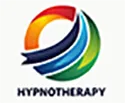Self Hypnosis and Clinical Hypnotherapy MP3 Downloads
High quality, professional and powerful hypnotherapy sessions!
Stress Relief
Reduce anxiety and achieve deep relaxation.
Better Sleep
Get restful, uninterrupted sleep.
Pain Relief
Manage chronic pain naturally.
Confidence Boost
Build self-esteem and positive self-image.

WHAT WE DO
Unlock your potential with HYPNOSIS!
Struggling with stress, anxiety, or habits that hold you back? Clinical hypnotherapy offers a natural, evidence-based path to lasting change. By guiding you into a relaxed, focused state, hypnotherapy accesses your autonomic nervous system and parts of your mind that you don't normally access —where deep-seated beliefs and patterns reside. Here, you can reframe negative thoughts, overcome fears, and unlock your potential for healing and growth.
Unlike traditional talk therapy, hypnotherapy works swiftly and gently, addressing issues like chronic pain, insomnia, phobias, and even weight management at their root. It’s a safe, drug-free approach backed by science, empowering you to break free from limitations and embrace a life of clarity and confidence.
Your transformation starts here.
ABOUT US
Your Trusted Partner in Personal Change!
Each session is written and voiced by Tim Brunson, who has both PhD in Clinical Hypnotherapy and a Doctorate of Clinical Hypotheray degrees, as well as almost 3,000 hours of training that includes courses in performance, and mental and physical health topics.
These sessions are based on university, clinical, and medical school research documented by the United States Department of Public Health. While our sessions are not a substitute for medical and psychological care, they are based solid scientific evidence and have shown results. While a majority of our titles are meant to be used by the general public, our clinical titles are intended to be used under qualified and licensed health care supervision.

TESTIMONIALS
Real Life-Changing Results

I personally found the session to be very nurturing and empowering - the simplicity added to the power. All clients my have relaxed very quickly & easily.
Moria H.
Hypnotherapist

I am currently working with a patient who has fibromyalgia and concentrating on pain management. She is doing much better and I am tailoring the induction to work with other manifestations of the disease.
Dr. Richard C.
Therapist

I've been using this in my practice with a tremendous amount of success. Clients are experiencing being 'pain-free'! I work with many arthritis and fibro sufferers and they are finding relief with this method!
Neil S.
Hypnotherapist
FREQUENTLY ASKED QUESTIONS
Buy with confidence and understanding!
Frequently Asked Questions, your go-to resource for any queries you might have about our sessions. We understand that choosing the right product can be overwhelming, and we're here to help you make informed decisions.
Our aim is to provide clear, concise, and comprehensive answers to ensure your shopping experience is smooth and satisfying. Should you have any additional questions, our dedicated customer service team is always ready to assist you.

How can hypnosis and hypnotherapy work for you?
Hypnosis is a process, which helps you get out of your own way and allows you to select how you think. This enables you to access the hidden power of your brain – and body. Your brain has always had an ability to easily understand and organize. This capability is initially formed during the first 24 months of life. Then it is reinforced during further growth periods, which end around ages 13 and 25. However, some people have learned to suppress these abilities. Normally, this occurs when they see examples of others who are untidy or unable to organize their immediate environment and set goals. Many of the challenges that a person faces in life are predominantly the results of learned behaviors. This creates the misperception that this is just “who I am.” In turn, this incorrect identity is reflected by which parts of their brain are typically activated, idled, and inhibited. The use of advanced SPECT scans of the brain reveals how energy is organized in the brains of people who see themselves as unsuccessful in life. The good news is the opposite is also true. People who are successful use their brains differently. They repeatedly activate parts of their brain, which are associated with confidence. Through repeated use, these areas become increasingly powerful. This is where hypnosis helps.
What is your background and experience?
You'll benefit from my over 2,700 hours of documented training and education in the fields of hypnotherapy, mind/body health, energy medicine and energy psychology, Neuro-Linguistic Programming, gene expression, sound therapy (including psychoacoustics), Tibetan esoteric techniques, and more. I use techniques developed by Milton H. Erickson, MD, David Elman, Ernest Rossi, PhD, and many other classical and contemporary masters. I am a certified trainer in Neurolinguistic Programming and have earned both Doctor of Clinical Hypnotherapy and PhD in Clinical Hypnotherapy degrees. As the founder of The International Hypnotherapy Research Institute, I've developed numerous courses and taught and certified hypnotherapists, coaches, mental health professionals, and medical professionals around the world. I have over 30 years clinical experiences working with patients and clients and have often worked in conjunction with and under the supervision of licensed mental health and medical professionals.
What makes your MP3 sessions unique?
Our sessions are concise but powerful. Concise to meet your time limitations but written and voiced to be extremely effective. Our sessions combine hypnotherapy, Neurolinguistic Programming (NLP), and energy therapy. All titles have been designed with Advanced Neuro-Noetic HypnosisTM concepts and have been approved by The International Hypnosis Research Institute.
How do I use your sessions?
It is recommended to listen to a particular session one a day for six weeks so that the included suggestions can become habits and second nature. If you purchase more than one title, you can therapeutically use multiple products. We recommend that after the six-week period that you take a break for at least a couple of weeks.
What is your return policy if I am not satisfied with a product?
We offer a hassle-free return policy to ensure your satisfaction. If you are not completely satisfied with your purchase, you can return the product within 30 days for a full refund. Our refund policy only covers individual purchases and may not be honored if a purchaser has received a previous refund.
Does hypnosis really work?
During the 20th century medical and mental health scientific institutions have clearly established the benefits of altered states of mind, guided imagery, and suggestion. The American Medical Association approved hypnosis as a valid intervention in 1958. The American Psychological Association followed their lead in 1959.
How long has hypnosis been around?
The history of hypnosis goes at least back as far as the sleep temples in ancient Egypt. And, Hippocrates, the 4th century B.C. “father of medicine” used techniques that can be described as hypnotic. In the 18th century, the Austrian medical doctor, Franz Anton Mesmer, who affected hundreds of mental and medical cures through the use of his “animal magnetism” was accused by Benjamin Franklin of achieving his successes merely through the use of the power of suggestion. Although Mesmer and Mesmerism was in disrepute, his contribution lived on in the works of others such as James Esdaile, the British surgeon who completed over 300 radical surgeries using mesmerism as his only form of anesthetic. The word hypnosis was coined in the 1890’s by another British doctor by the name of James Braid, who likened the dazed state that his subjects attained as a modified sleep state. He used the Greek word “hypnosis” to describe this state. Since Braid, notables such as Hippolyte Bernheim, Sigmund Freud, Carl Jung, Jean-Martin Charcot contributed to the field. The three most notable contributors of the 20th century were Ormand McGill, Ph.D., Milton H. Erickson, who convinced the AMA to approve hypnosis, and David Elman. Ericksonian Hypnosis, an indirect, conversational form of hypnosis, is probably the most recognized set of techniques among psychologists in the U.S. In the 1950’s there was a considerable rivalry between Erickson, the psychiatrist, and Elman, the former stage hypnotist who taught thousands of clinical practitioners. Although Ericksonian techniques are known for their elegance and applicability to psychological issues, the effectiveness and practicality of Elman’s techniques is leading to a revived interest in the relevance of the showman’s wealth of knowledge.
Can I be hypnotized?
Have you ever been asleep? Have you ever found yourself taking a suggestion? If you answered yes, then you most certainly can be hypnotized. Your brain goes through several states every day. Delta is the sleep state. Upon awakening you go through Theta, which is a very deep relaxation, Alpha, which is a mild relaxation, and then enter the Beta state, which is full wakefulness. And if you are hyper-aware, you may have gone into the Gamma state. You may be hypnotized in any of these states. However, our sessions are normally designed to quickly take you to the Alpha, mild relaxation state, or Theta state, for pain management. The key criteria that we are trying to achieve is a suspension of your critical judgment (faculty), mental and physical relaxation, and a heightened awareness and suggestibility.
Will I lose control under a hypnotic state?
Absolutely not! You will quickly realize that in a hypnotic state you actually have more control of your mind and mental processes. It is impossible for you to accept a suggestion that is against your morals or ethics.
If I go to sleep durng the session, do I get any benefit?
We do not recommend that you listen to our sessions while asleep. For maximum benefit you should listen to these sessions when you can safely attain a mild relaxed state of mind (Alpha state). If you have a tendency to go to sleep while in a session you should change your posture (for example, from lying down to sitting) or the time of day. If you fall asleep during the session, do not count this as one of your sessions.
Why can't I listen to your sessions while driving?
You must NEVER listen to any of our sessions when safety dictates your full awareness. Among other things, this means if you drive, don’t listen to one of our sessions. This is an absolute requirement. The language we use in the session is designed to overload your conscious mind. Before you know it your mind may be wondering. This does not mean that you are losing control. However, you will find yourself on a journey where you are piloting the various consciousnesses of your mind and body (AND NOT YOUR CAR!).
What are some common myths and misconceptions about hypnosis?
Thanks to Hollywood, many people think of blood-sucking vampires, quaking like a duck, and otherwise losing control when they think about hypnosis. The truth is that you will absolutely not lose control of your body or actions when you are hypnotized. Quite to the contrary, you will find a heightened sense of control and awareness. You cannot be hypnotized to do something against your will, ethics or morals. Also, while your memory may be enhanced while in a hypnotic trance, you will find that your forgetfulness will probably be no more or no less than it is normally. Most people find our sessions to be very enjoyable and relaxing.
Contact Us
2104 Del Carmen Dr, Anniston AL 36207
Copyright© 2025 The International Hypnosis Research Institute, LLC - All Rights Reserved.

